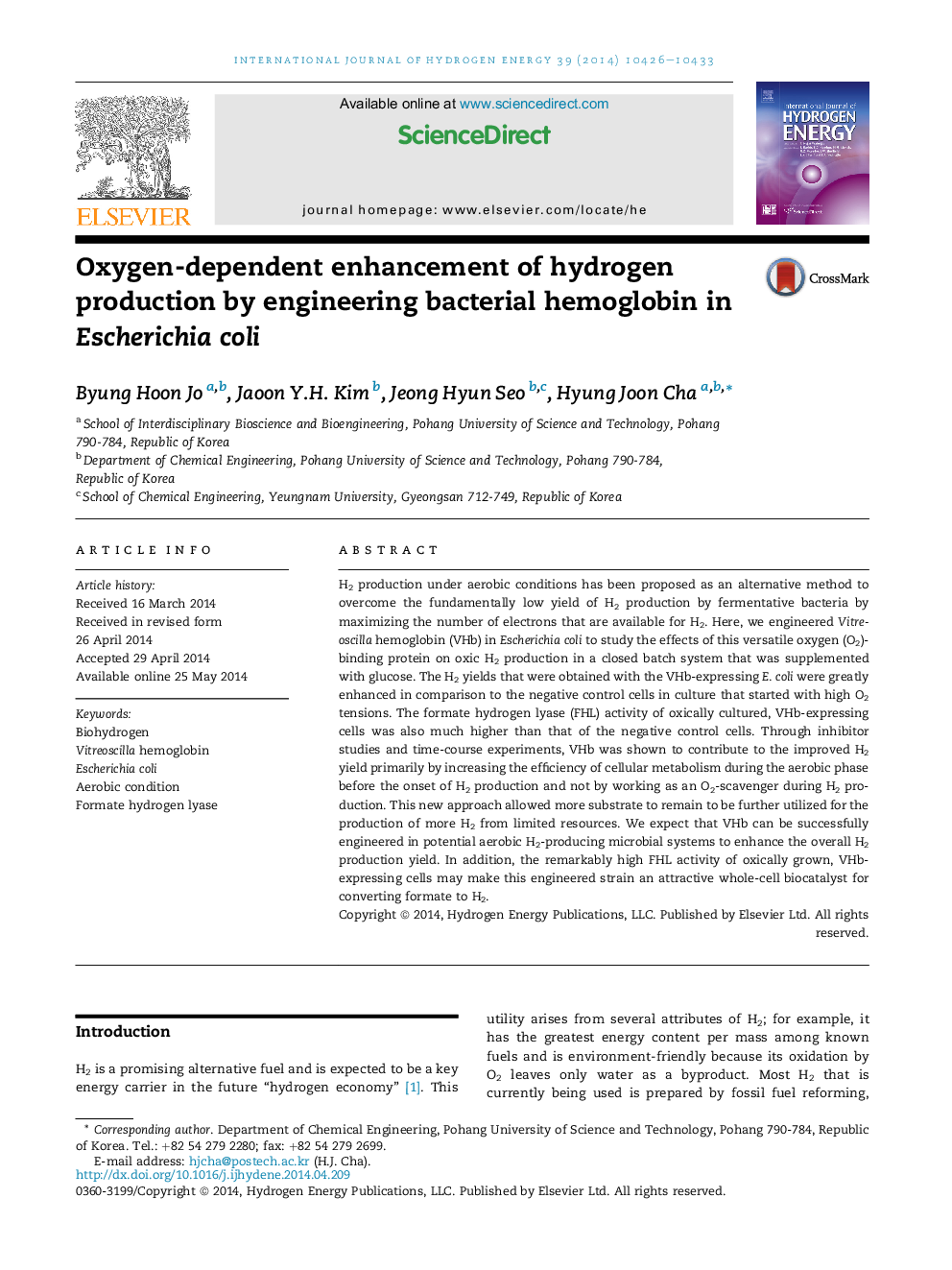| Article ID | Journal | Published Year | Pages | File Type |
|---|---|---|---|---|
| 1276169 | International Journal of Hydrogen Energy | 2014 | 8 Pages |
•VHb was used to improve fermentative H2 production under oxic conditions.•H2 yield by VHb-expressing Escherichia coli was increased in oxic culture.•Oxically grown cells that contained VHb had higher FHL activity.•VHb effects were primarily achieved under aerobic phase but not during H2 production.•Increased substrate availability was responsible for the higher H2 production.
H2 production under aerobic conditions has been proposed as an alternative method to overcome the fundamentally low yield of H2 production by fermentative bacteria by maximizing the number of electrons that are available for H2. Here, we engineered Vitreoscilla hemoglobin (VHb) in Escherichia coli to study the effects of this versatile oxygen (O2)-binding protein on oxic H2 production in a closed batch system that was supplemented with glucose. The H2 yields that were obtained with the VHb-expressing E. coli were greatly enhanced in comparison to the negative control cells in culture that started with high O2 tensions. The formate hydrogen lyase (FHL) activity of oxically cultured, VHb-expressing cells was also much higher than that of the negative control cells. Through inhibitor studies and time-course experiments, VHb was shown to contribute to the improved H2 yield primarily by increasing the efficiency of cellular metabolism during the aerobic phase before the onset of H2 production and not by working as an O2-scavenger during H2 production. This new approach allowed more substrate to remain to be further utilized for the production of more H2 from limited resources. We expect that VHb can be successfully engineered in potential aerobic H2-producing microbial systems to enhance the overall H2 production yield. In addition, the remarkably high FHL activity of oxically grown, VHb-expressing cells may make this engineered strain an attractive whole-cell biocatalyst for converting formate to H2.
